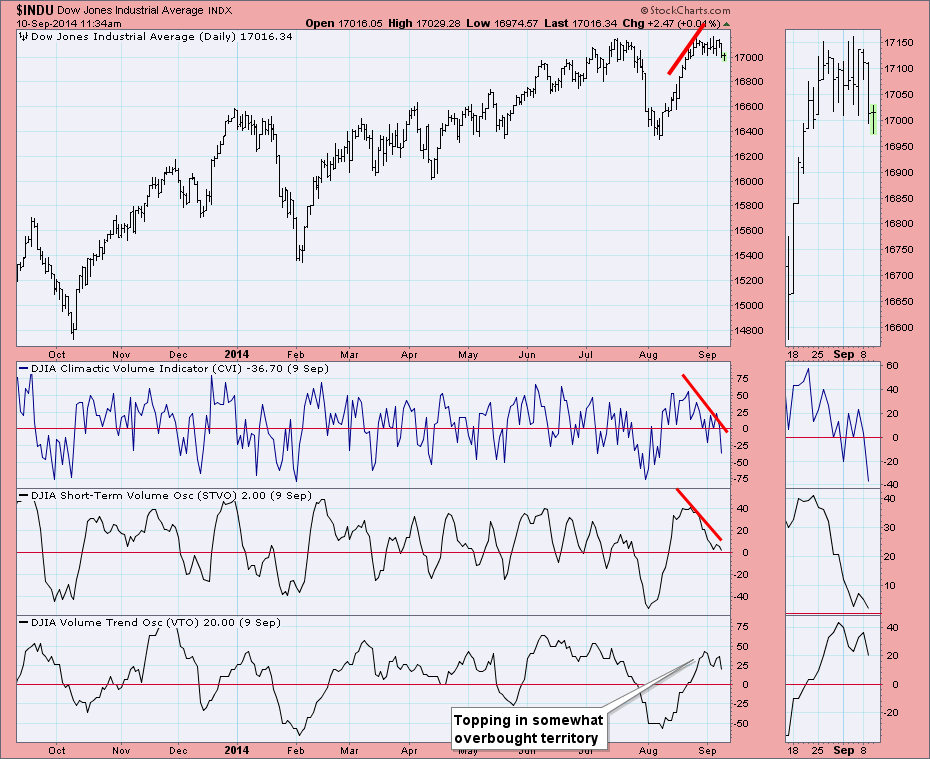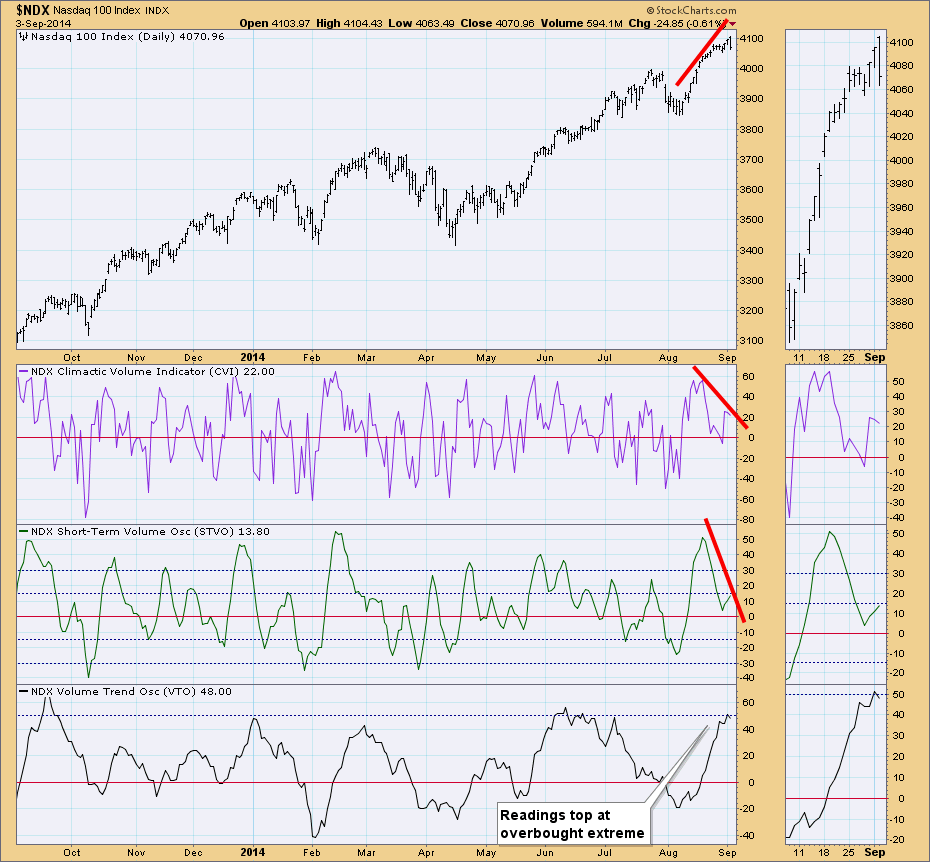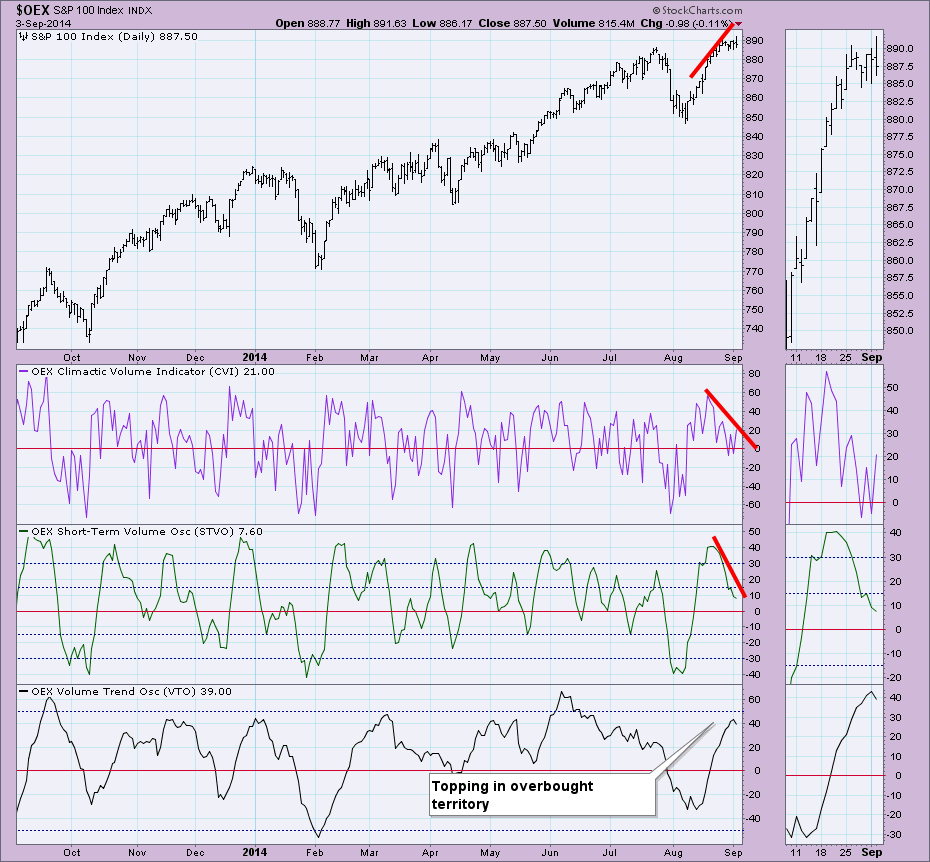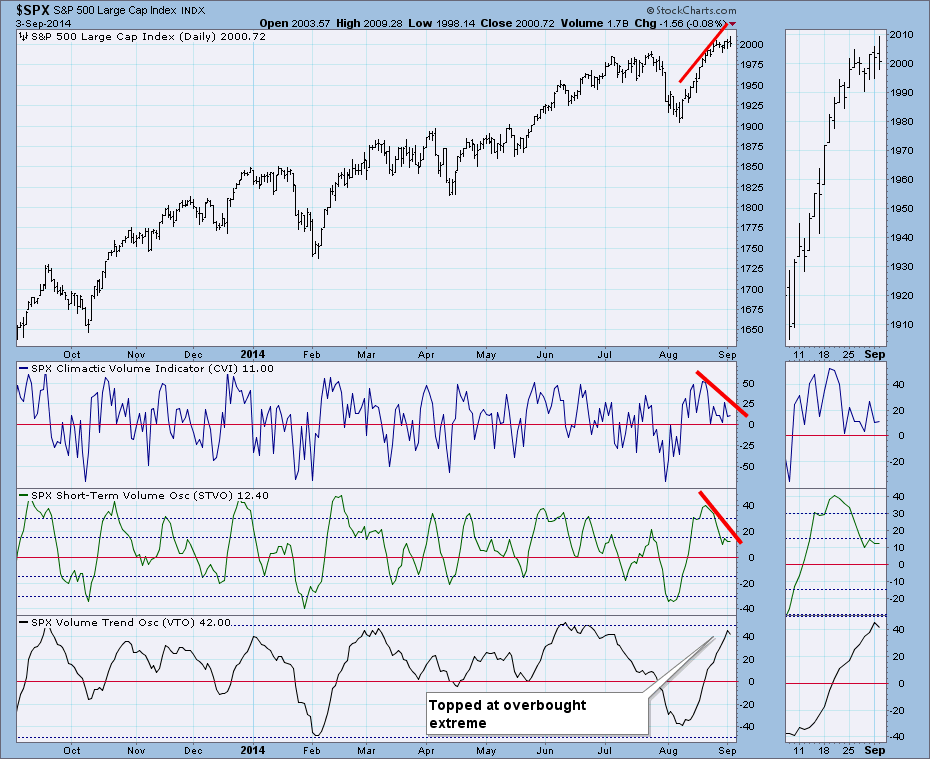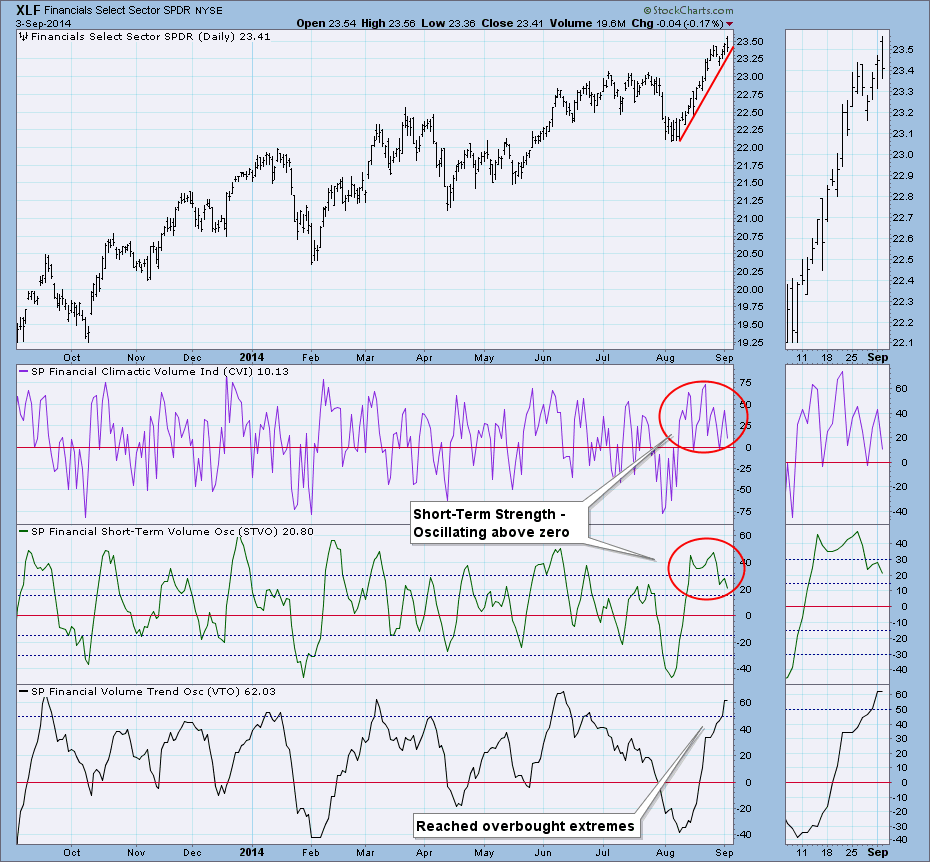
The DecisionPoint On Balance Volume (OBV) indicator suite that consists of three related indicators: Climactic Volume Indicator (CVI), Short-term Volume Oscillator (STVO), and Volume Trend Oscillator (VTO). All of these indicators are derived from the basic OBV calculation (To read more about On-Balance Volume click here). To construct the DecisionPoint OBV suite of indicators, the OBV for each stock in a given index is calculated. Then algorithms are applied to those results that in turn are summarized into the actual indicators. Because these indicators are related by the same basic OBV calculation, they can be presented together on the same chart for a view of OBV conditions in three different time frames: ultra-short-term, short-term and intermediate-term.
Looking at the OBV indicators, you'll see there are negative divergences that continue to plague the ultra-short (CVI) and short term (STVO). The intermediate term (VTO) has topped on every chart today. One problem with the intermediate term is that most all of the readings have not only topped, but have topped in overbought territory. Many tops are in extremely overbought territory or near extremes. These conditions will need to be relieved, so there could be problems in that time frame.
The CVI has been losing steam as its tops have been lower and lower. The STVO topped in somewhat overbought territory and has already reached neutral. The VTO topped in overbought territory, but a top is a top and that is bearish.
In the case of the NDX, the STVO has turned back up out of neutral territory. We always hope that indicators reach overbought or oversold extremes before turning. In the case of the VTO, it did reach overbought extremes before turning, giving it plenty of room to ride lower should prices move lower.
The VTO on the OEX also topped but in only overbought territory. The negative divergences with price continue on the CVI and STVO.
You can see that there is conformity among most of these charts as most are configured the same way.
One chart that doesn't look the same is XLF, the Financial Sector ETF. Notice there was only a small price pullback during the rally. The CVI and STVO both oscillated above zero during the rally which is an indicator of internal strength in the short term. The only problem is that all three indicators are falling with the VTO just topping; however, until the CVI and STVO get below the zero line in a significant way, the chart is bullish.
Let me caveat this blog article with the proclamation "bull market rules apply". When you are in a strong bull market, readings can get very overbought. Bull market rules remind us that the bias is positive; that means that we should be prepared for possible bullish resolutions rather than completely bearish ones.
If you like the OBV indicator suite charts, you'll find them in the free DecisionPoint Market Indicator ChartPack in ChartList "DPMI - 1030 - OBV Indicator Set (CVI/STVO/VTO)"
Happy Charting,
Erin

